Philadelphia’s two world fairs—the Centennial Exhibition in 1876 and the Sesquicentennial fifty years later in 1926, introduced all kinds of stuff that folks didn’t know they’d need, want, or would come to stress over.
In 1876, the newfangled included the telephone, the typewriter, ketchup, and kudzu, introduced to control erosion. Visitors climbed to the torch of an unfinished Statue of Liberty through her forearm. They stared wide-eyed at the ominous Krupp cannon from Germany.
Representing “progress” at the Sesquicentennial was the Dixie Cup, its disposability marketed as good public health practice. Other innovations included a teller’s window made of “Safetee Bullet Proof Glass” for the Franklin Trust Company. Home improvements featured rolls of Blabon’s checkered linoleum for the modern “electric kitchen” where up-to-date consumers swapped vintage, wooden ice boxes for sleek, white Frigidaires. Homes, furnished by J. B. Van Sciver, would be tidier with the help of a Eureka Vacuum Cleaner , if not a Hoover.
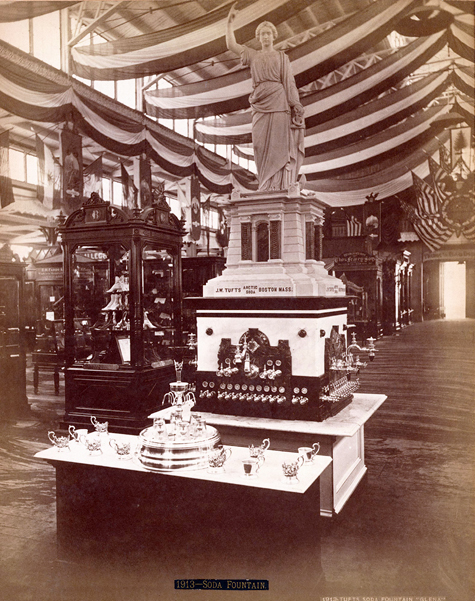
All of that ogling during a hotter-than-usual Centennial summer generated a great thirst. No problem. Philly pharmacist Charles Elmer Hires offered up samples of his newly concocted root beer. James Walker Tufts from Pinehurst, North Carolina took the refreshment supply chain a step farther, purchasing purveying rights for his “Artic Soda,” sold from one or another monumental, marble-countered fountain.
Thirsty Sesqui guests had their choice of concessions. Hires retuned, serving from a giant, tipped-over barrel. One could get a caffeine fix at the George Washington Coffee Concession. Valley Forge Beer purveyed their (most likely non-alcoholic) brew. Even lighter fare was sipped at the Clicquot Club Ginger Ales stand. At Emerson Drug Company’s booths one could find Ginger Mint Juleps, or, if need be, a Bromo Seltzer.
All of which gets us thinking, not only about the past, but about the future. What will we be slaking or toasting with five years hence, in 2026, at the…what are we calling it…the Semiquincentennial?
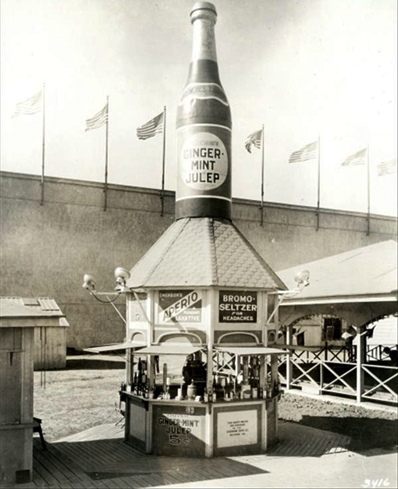

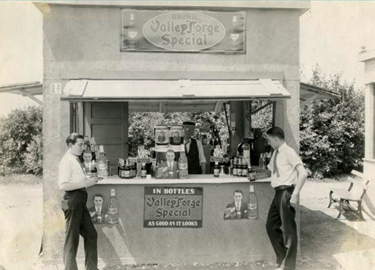
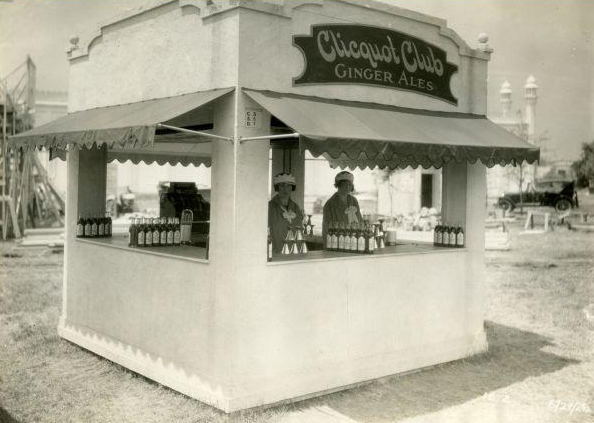
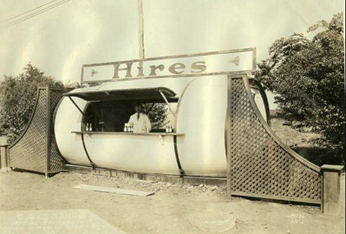
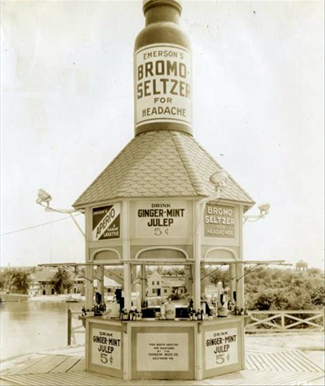
2 replies on “Slaking thirsts at the Semiquincentennial”
Whatever exactly “Valley Forge Special” was, it would not have been beer as we know it, because the Sesquicentennial was during Prohibition. “Valley Forge Beer” was a brand of the Adam Scheidt Brewing Co. of Norristown. Most likely, “Special” was some sort of nonalcoholic beverage of the kind that many brewers made to ride out the booze ban.
Thank you. Good point. I revised the mention of Valley Forge Beer accordingly.